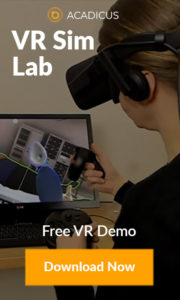In this podcast, I review some of the reasons I remain so optimistic about the future of virtual worlds, and describe the fundamental characteristics I believe make user-generated 3D worlds a game changing new standard every organization should be exploring – with or without a budget.
I also touch on another point I intend to write more about, which is the failing premise of expensive, polished, static and exclusive content creation handed down by professional developers as the only means for organizations to build a presence in Second Life. If you want strictly developer-controlled content, buy an X-Box. I think we need to focus more on enabling the community of people we hope will actually use these places in a more participatory, dynamic and ongoing design development process. It’s about being less fearful of change, and more about creating architecture that is dynamic and reflexive, in a sense, to the community or organization’s ever-evolving needs. It’s a tremendous opportunity we have yet to fully explore.
I’ll admit to the hypocrisy of that challenge, given that I’m a content developer myself, and frequently take on assignments to do the same. For the most part, we haven’t seen a clear alternative (yet). But I think there are emerging opportunities on the horizon, and I think we need to move away from this familiar tune:
- build it once (pay a developer big bucks – build something way too big, on way too much land)
- hope like hell that it works and people visit (calculating success using archaic ROI models)
- stand idly by as it stagnates (because the money’s gone…)
- shut it down or let it sit vacant, then blame the platform (or even the community) for that failure
This is a mentality we’re naturally dragging into virtual worlds from physical reality, where we have no choice but to be shaped by our buildings, simply because they’re too expensive to modify. In sum, I think developer-centric practices ignore the fundamental paradigm-shift that user generated virtual worlds afford, and could stand to be re-considered, again and again until we finally do scratch the surface.
Allow me to digress further still, but I think the single, most significant difference between Second Life and other emerging platforms really isn’t all the stuff we hear about daily – I don’t think it will be things like ‘Nautilus‘ or Immersive Workspaces, imho, for lots of reasons, though I do certainly respect those efforts. It isn’t even just the idea of ‘user generated content’ – it goes deeper than that. I think the killer app for Second Life and OpenSIM is lying in wait beneath that deceptively simply little ‘Modify’ button we so often take for granted.

You won’t find a button that works quite like this one in any other immersive, virtual world platform, and it is a significant point of differentiation that needs more attention. This button is what keeps me from working in any of the competing platforms, and is certainly where the lion’s share of my future involvement with virtual worlds lies.
I hope to follow up on this meandering post and podcast with more fine-tuned thoughts, but wanted to put this out there as food for thought. If you want to talk more about what I think this all means, how I think it can be done, or why you think I’ve got it all wrong, lets chat it up. Leave a comment, send me an email (jbrouchoud at gmail) or meet me in-world (Keystone Bouchard).
Here is a summary of the podcast:
- In real life, as Winston Churchill said, “We shape our buildings and afterwards, our buildings shape us” but does that remain true in a virtual environment where the community of people who actually use the buildings are able to modify them at will?
- Second Life is the single, largest collective expression of creativity in a single location the world has ever seen – a cultural renaissance (three times the size of Boston? five times the size of San Francisco? four times the size of Seoul?)
- Realtime object creation, modification and sharing as a game changer – bigger than we can imagine now
- Prototype just about anything you can imagine
- Share those ideas with others, and see what the community thinks about it.
- Barriers to cross disciplinary sharing and innovation eroding
- Social component= glue transforming the creativity component from a solo experience into collaborative
- Inverting the traditional top-down hierarchy of design development – engaging (empowering?) community – employees, or your customers, students, etc.
- Collaborating in virtual space around 2D documents is overrated
- 3D-Wiki technology, build the tools that will help take collaborative innovation to the next level
- VW as arena where Wikinomics and Wisdom of the Crowds principles play out into 3D
- Replicate physical buildings only if they have iconic value, or if you’re building it for training and orientation. Different norms and expectations
- Still need to build on familiar patterns and visual cues – not just floating in space unreferenced (read: ‘On Physical Replication…‘)
- Virtual environments are more like a liquid than a solid artifact (See ‘We Shape our Virtual Buildings…’
- Heavy up-front investment with no community input or subsequent updating leads to failure – don’t blame the platform or the community!
- Lessons and opportunities from web 2.0 being lost in translation from 2D into 3D
- VW feels more like architecture – habit of thinking it’s permanent, inflexible, expensive
- Don’t drag that limitation into virtual worlds. In Second Life, we can shape our virtual buildings and afterwards, we can keep shaping them.
- We’re only dimly aware we are of the potential virtual worlds hold both now and into the future.
- We’re just getting started…

